Sylvania Street and park luminaires
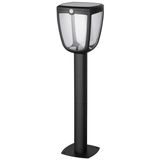
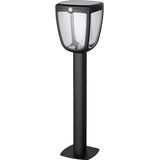
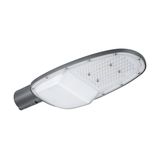


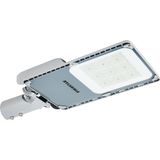


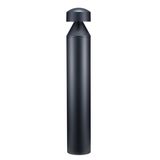


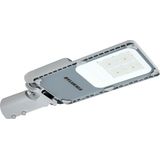
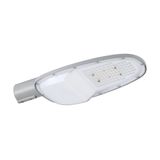

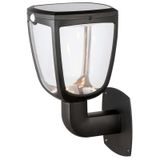
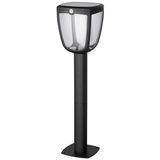
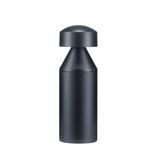
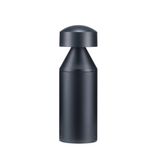



sylvania street luminaires optics and mounting
Distribution sets include Type I through Type V plus pedestrian cut-offs; tilt plates and step adapters keep aiming consistent on mixed poles. Tool-less gear trays and captive screws speed night work. Specifiers use sylvania street luminaires when they need repeatable glare control, uniformity, and bracket geometry across corridors and arterials.
sylvania park lighting comfort and safety
Pedestrian routes ask for warm tones, shielded cut-off, and high vertical illuminance for faces and signage. Lumen packs scale 2,000–10,000 lm with low-glare diffusers and bollard companions that share drivers and finishes. Designers mark sylvania park lighting where ambience and pathway safety must coexist without raising maintenance overhead.
sylvania outdoor street lights electrical behaviour
Drivers publish inrush, hold-up, and dimming curves; PF stays stable at reduced output; ripple is kept within roadway guidance. NEMA/ZW sockets or Zhaga Book 18 seats accept nodes for CMS tie-in. When feeders are long, sylvania outdoor street lights run with coordinated surge arrestors at cabinet and head to ride out storms and switching transients.
sylvania urban lighting fixtures durability and service
Powder-coated aluminium housings, UV-stable lenses, stainless fasteners, and breathable membranes resist chalking and pressure pumping. Hinge-and-latch lids protect seals; cable entries are metric with strain relief. Facilities choose sylvania urban lighting fixtures so day crews can swap gear trays without disturbing optics or pole headings.
sylvania led street lamps photometrics and energy
Neutral whites around 4000 K maximise acuity on traffic lanes; 2700–3000 K calms residential streets; CRI 70 is typical on roads while squares may step to CRI 80+. Controls support step-dim, midnight algorithms, or continuous curves. Energy teams specify sylvania led street lamps to meet kWh and glare limits with clean, testable dimming profiles.
sylvania roadway lighting integration and control
DALI-2 or 0–10 V sits behind CMS nodes for scenes, schedules, and diagnostics; power-line or RF backhaul depends on municipality policy. Asset IDs map to pole numbers and GIS; failure flags push to maintenance queues. Engineers document sylvania roadway lighting so luminance classes, dimming rules, and reporting are locked before procurement.
sylvania exterior lighting systems accessories and variants
Bracket arms, mast adapters, visor kits, and anti-bird features share hole geometry and torque data; lens plates swap to adjust spill near façades. Emergency egress heads at underpasses align optics and CCT with the main run. Planners tag sylvania exterior lighting systems when they want fixtures, brackets, and nodes to arrive as a kitted set per street segment.
Applications and compatibility
- City streets and arterials: cut-off distributions with CMS step-dim, 6–10 kV surge, warm-up free starts in cold weather.
- Parks and campuses: lower CCT, high vertical lux, bollards and post-tops on the same finish codes.
- Residential areas: comfort optics, part-night dimming, coated shields near façades.
- Tunnels and underpasses: glare control at portals, standby-to-boost profiles, salt-resistant hardware.
Check pole outreach and tilt, confirm MCB curves against inrush, and keep earth paths short with 360° braid clamps where shielded cables are used.
Technical specifications and standards
- Electrical and controls: 220–240 V AC, PF ≥0.9, declared inrush; DALI-2 EN 62386, 1–10 V EN 60929; NEMA/ZW or Zhaga sockets for nodes.
- Photometric: 120–160 lm/W; CRI 70/80; CCT 2700/3000/4000 K; ≤3-step SDCM; distributions I–V and pedestrian variants
- Mechanical/IP/IK: IP65/IP66; IK08–IK10; aluminium housings, stainless fixings, UV-stable lenses; −30…+50 °C.
- EMC/safety: EN 60598 luminaire safety, EN 60529 IP, EN 62262 IK, EN 61347 driver safety, EN 55015 and EN 61000-3-2 EMC, EN 62471 photobiological.
- Surge and protection: 6–10 kV L-N typical; cabinet SPD coordination recommended.
Selecton criteria for B2B clients
- Fix lighting class and target uniformity, then choose distribution and tilt.
- Lock CCT/CRI by zone; confirm glare limits near dwellings.
- Size surge and MCBs from declared inrush and feeder length; set mains-return hold-off.
- Define node interface and CMS protocol; map asset IDs to GIS.
- Standardise brackets, colour, and finish codes; kit visors and adapters per pole type.
Advantages of working with Bankoflamps
We align pricing to street segments and expose live EU stock before road closures are booked. Quotes arrive in about an hour with EAN/MPN so variants stay fixed. Your portal shows lead times, shipment status, and downloadable price lists with validity windows sized for multi-phase works. Approved clients can use post-payment up to 30 days. We consolidate partials to cut freight, and your account manager cross-checks distribution choice, tilt and outreach, node interface, surge level, IP/IK class, visor kits, and bracket hardware against your drawings so cartons land site-ready across France, the Baltics, Germany, Spain, Italy, Belgium, and the Netherlands.